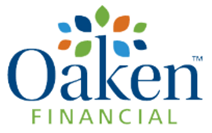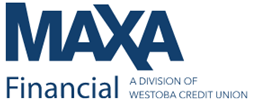The Top GIC Rates in Canada
Interest rates have been steadily rising over the past few years, and there’s no better time than the present to lock into a fixed term GIC. With the threat of a recession looming over the horizon due to COVID-19’s potential economic impact, you can take advantage of a GIC to shield some of your money away from a declining prime rate. Aside from what’s happening in today’s economic climate, there are many added benefits to investing in GICs. The most important thing to make sure is that you receive the best offer for your financial needs, and this article will help shed some light on the pros and cons of GICs in Canada.
BEST NON REGISTERED GIC RATES IN CANADA
*Rates as of May, 2020

- GIC TERMS
- 1-month = 2.00%
- 1-year = 2.15%
- 2-year = 2.20%
- 3-year = 2.30%
- 4-year = 2.30%
- 5-year = 2.30%
- 10-year N/A
- CONDITIONS
- Paid & compounded annually
- Minimum principal = $1000
- Non-redeemable
- CDIC insured

- GIC TERMS
- 1-month N/A
- 1-year = 2.05%
- 2-year = 2.10%
- 3-year = 2.20%
- 4-year = 2.30%
- 5-year = 2.40%
- 10-year = 2.70%
- CONDITIONS
- Paid & compounded annually
- Minimum principal = $100
- Non-redeemable
- CDIC insured

- GIC TERMS
- 1-month = 0.20%
- 1-year = 1.00%
- 2-year = 1.10%
- 3-year = 1.15%
- 4-year = 1.20%
- 5-year = 1.60%
- 10-year = 1.80%
- CONDITIONS
- Paid & compounded annually
- Minimum principal = $5000
- Non-redeemable
- CDIC insured

- GIC TERMS
- 1-month N/A
- 1-year = 2.00%
- 2-year = 2.05%
- 3-year = 2.10%
- 4-year = 2.15%
- 5-year = 2.20%
- 10-year N/A
- CONDITIONS
- Paid & compounded annually
- Minimum principal = $500
- Non-redeemable
- Not CDIC insured

- GIC TERMS
- 1-month = 2.00%
- 1-year = 2.10%
- 2-year = 2.20%
- 3-year = 2.30%
- 4-year = 2.30%
- 5-year = 2.40%
- 10-year N/A
- CONDITIONS
- Paid & compounded annually
- Minimum principal = $1000
- Non-redeemable
- CDIC insured

- GIC TERMS
- 1-month N/A
- 1-year = 1.80%
- 2-year = 1.15%
- 3-year = 1.25%
- 4-year = 1.35%
- 5-year = 1.45%
- 10-year N/A
- CONDITIONS
- Paid & compounded annually
- Minimum principal = $500
- Non-redeemable
- CDIC insured

- GIC TERMS
- 1-month N/A
- 1-year = 1.85%
- 2-year = 1.70%
- 3-year = 1.75%
- 4-year = 1.75%
- 5-year = 1.80%
- 10-year N/A
- CONDITIONS
- Paid & compounded annually
- Minimum principal = $1
- Non-redeemable
- CDIC insured

- GIC TERMS
- 1-month N/A
- 1-year = 1.95%
- 2-year = 1.95%
- 3-year = 2.00%
- 4-year = 2.05%
- 5-year = 2.10%
- 10-year N/A
- CONDITIONS
- Paid & compounded annually
- Minimum principal = $1000
- Non-redeemable
- CDIC insured

- GIC TERMS
- 1-month N/A
- 1-year = 1.85%
- 2-year = 2.00%
- 3-year = 2.10%
- 4-year = 2.15%
- 5-year = 2.20%
- 10-year N/A
- CONDITIONS
- Paid & compounded annually
- Minimum principal = $100
- Non-redeemable
- CDIC insured
- Not available in Quebec
GIC RATE COMPARISON VIEW
| GIC PROVIDER |
30day |
1yr |
2yr |
3yr |
4yr |
5yr |
10yr |
| OAKEN FINANCIAL |
2.00% |
2.15% |
2.20% |
2.30% |
2.30% |
2.30% |
– |
| EQ BANK |
– |
2.05% |
2.10% |
2.20% |
2.30% |
2.40% |
2.70% |
| BMO |
0.20% |
1.00% |
1.10% |
1.15% |
1.20% |
1.60% |
1.80% |
| MAXA FINANCIAL |
– |
2.00% |
2.05% |
2.10% |
2.15% |
2.20% |
– |
| PEOPLES TRUST |
2.00% |
2.10% |
2.20% |
2.30% |
2.30% |
2.40% |
– |
| ALTERNA BANK |
– |
1.80% |
1.15% |
1.25% |
1.35% |
1.45% |
– |
| TANGERINE BANK |
– |
1.85% |
1.70% |
1.75% |
1.75% |
1.80% |
– |
| ICICI BANK |
– |
1.95% |
1.95% |
2.00% |
2.05% |
2.10% |
– |
| MOTUSBANK |
– |
1.85% |
2.00% |
2.10% |
2.15% |
2.20% |
– |
WHAT YOU NEED TO KNOW ABOUT GUARANTEED INVESTMENT CERTIFICATES
What is a GIC? (Guaranteed Investment Certificate)
A GIC, or Guaranteed Investment Certificate, is a financial product that ensures a fixed rate of return over a fixed time period. Canadian GICs are widely regarded to be one of the safest financial investments on the market, and can act as a virtually risk-free part of an individual’s gain portfolio. Since all Canadian GIC interest rates are insured, it appeals to conservative risk-averse investors. Much like a high interest savings account, your money accumulates periodic interest just by making a deposit – there is no active management of the funds inside. Fortunately, GICs up to $100,000 are completely ensured by the CDIC (Canadian Deposit Insurance Corporation) so your money is protected even in the case of a financial institution bankruptcy.
How Does a GIC Work?
Think of buying a Canadian GIC as an act of lending money to your financial institution. In return, the borrower (for example your bank) will promise to pay you back your money plus a decent interest return on the principal amount. While this sounds too good to be true, there is one main downside – the liquidity of your investment. Any amount of money put towards a GIC should be considered a strict commitment, since you can only see it again when the GIC fully matures (the end of the agreed upon time period). Unlike a high interest savings account where you can withdraw money at any time, GICs charge harsh early withdrawal penalties on any cash removals prior to maturity. As a result, a financial institution is willing to give you more generous interest rates for longer terms – as long as you don’t need that money in the short to medium run, you stand to benefit from high, almost risk free interest rates. A GIC time to maturity (term) can range anywhere from as short as a month (low rate) to as long as 10 years (high rate).
Are There Taxes on a GIC?
Similar to other income-generating investment products, the answer is yes – but not always. If you purchase a GIC outright, you automatically forfeit a percentage of just the income earned on your investment (not the principal amount). Alternatively, if you purchase a GIC through a registered tax-sheltered account like an RRSP or TFSA, any funds you earn you get to keep tax-free. However, this method this only applies if you remain compliant with any RRSP/TFSA rules in regards to contribution room and account eligibility.
Are GICs Worth It?
As with the vast majority of investment vehicles, it depends on your financial needs and lifestyle. If you have a positive attitude towards spending, and enjoy having easy access to cash at any given moment, then locking into a GIC may be counter-intuitive. When you treat guaranteed investment certificate funds as inaccessible (rightfully), you trade away the opportunity to use that money in the short run. To clarify, GICs are typically recommended for investors with an extremely low risk tolerance, budget friendly, and have good financial health.
Why Should I Invest in a GIC in Canada?
The strongest advantage that a guaranteed investment certificate has over similar financial products is that your principal is “guaranteed” to be returned. Financial institutions have a legal duty to insure your initial deposit along with any accumulated interest. In the highly unlikely case where they go bankrupt, the CDIC (a Canadian government-owned financial service) will make sure your money is safely returned. Since a GIC is inherently risk-free, it is often incorporated in personal portfolios as a hedge against risky ventures like owning stock or ETFs.
What is GIC Laddering?
If you dislike the idea of keeping your hard-earned funds in a practically inaccessible account, you can take advantage of GIC laddering. Laddering provides a bit more flexibility when it comes to having short term cash available. This financial technique involves investing your money in multiple GIC deals with differing maturity dates. By having a few short term, medium term, and long term GICs, you are effectively creating a “ladder” of future cash flows. While the cumulative interest from opening several GICs will be lower than locking in one 10-year rate, it will give you the power to decide whether or not to use some of those funds for alternative investments.
What Are The Types Of GICs?
The most common types of GICs on the market include redeemable/non-redeemable, cashable, market-linked, and registered GICs.
Cashable GICs have a higher degree of liquidity than traditional GICs, since it allows you to withdraw your funds penalty-free at any given time after an initial 30-90 day closing period. Typically the trade-off for this form of GIC involves giving up a competitive interest rate in favour of added flexibility. Cashable GICs also grant you the ability to profit from rising interest rates in the future, since you’ll have the opportunity to reinvest.
A redeemable GIC is basically the same as a cashable GIC. Some financial institutions use the words interchangeably, except a redeemable GIC does not have a 30-90 day closing period (meaning you can withdraw funds at any time). The downside is they’ll often provide lower interest rates if you take an early exit. On the other side of the spectrum, a non-redeemable GIC is set up exactly as it sounds – your funds cannot be taken out early without a strict penalty. Except since you’d be sacrificing liquidity with a non-redeemable GIC, they typically provide higher interest rates.
Registered GICs are regular GICs that are bought under tax-sheltered accounts such as TFSA or RRSP. Note that in order to take advantage of this benefit, you need to be fully compliant with any respective regulations.
If you’re considering a GIC with a variable interest rate, a market-linked GIC is exactly that. While it guarantees the return of your initial principal amount, there is no sure-fire way to determine how much interest you’ll earn by maturity, since your GIC interest rate will depend on market conditions. This type of GIC leverages the risk of giving up a fixed interest rate for the potential of higher future rewards.
OUR THOUGHTS ON CANADIAN GUARANTEED INVESTMENT CERTIFICATES
All in all, a GIC is the best way to earn a guaranteed return on your deposit, assuming you don’t need to access that money in the short term. Since reputable banks have their GICs insured by the CDIC, your deposits are virtually risk free. Of course, you’d be able to access those funds earlier in a High Interest Savings Account, but by adding liquidity you’re giving up the true value of an income-generating product – the interest rate. Nowadays, the minimum principal needed to open an account is getting smaller and smaller; what better way to cut down on unnecessary spending than to lock a small amount of savings away into a GIC?
If you’re looking to take advantage of every dollar you spend and earn more rewards, click here for our article on Credit Cards.
GIC Frequently Asked Questions (FAQ)
Why should I buy a GIC in Canada?
There are a few practical reasons to invest in a guaranteed investment certificate in Canada. The first one, as we have previously covered in this article, is obvious: your money that’s held within a GIC is guaranteed, inherently making it one of the most risk free investment vehicles on the market. A second less obvious reason is that a GIC will prevent you from making bad financial decisions. By locking away funds for a certain term to gain a promised interest, you won’t be able to spend that money carelessly or be tempted to make an overly-risky investment. This can benefit you greatly when saving money for an important lifestyle event, such as marriage or college education. Lastly, another reason to invest in GICs is for portfolio balancing. Many investors fall victim to a poorly-weighted portfolio, in the sense that they accept a large amount of stock market risk and equities risk. Incorporating GICs into the mix reduces some of that risk, and ensures that at least a portion of your wealth is guaranteed into the future.
How is a GIC different from a bond?
If you hold a GIC in your portfolio, you will receive your principal plus a coupon (accumulated interest returns) when the GIC matures; which is very similar to how a bond works. The difference between the two investment vehicles is, a GIC retains its value regardless of market conditions while the value of a bond may fluctuate. This is why “bond markets” exist – for speculators to trade bonds based on their anticipated rise/fall in value, there is no equivalent platform for GICs. In practice, GICs can only go up while bonds have a possibility to go down.
When should I choose GIC over HISA?
While both financial products earn a return on your deposit, there is a trade-off between flexibility and returns. Speaking plainly, you’re just more likely to get a better interest rate with GICs in the long term. If you were to invest $1000 into a high interest savings account that earns 2%, compounded annually for 5 years, you would earn $104.80 interest – but only if you let the funds sit (no withdrawals or added deposits). Alternatively, if you locked into a 5-year GIC that earns 2.40% and also compounds annually, you would earn $125.90 interest under the same assumption.
What are GIC early withdrawal penalties?
Assuming you’ve locked into a GIC that is not redeemable or cashable, you are effectively under a contract that prevents you from requesting those funds back until maturity. In most scenarios, if you wish to break this contract you would face a harsh financial penalty called an early withdrawal fee. The amount charged will vary by financial institution, and some GIC providers are more lenient. Some banks are aware that you may need to access funds from a non-redeemable GIC because you did not budget properly for the short term, and will occasionally waive the early withdrawal fee in favour of softer punishment. Usually this penalty comes in the form of a greatly reduced interest rate, which is sometimes low enough to the point where you only receive your principal deposit back.
What happens to your GIC return when you die?
Your GIC principal amount is ensured to any immediate beneficiaries listed in your estate plan. However, tax ruling dictates that your GIC’s accumulated interest must be declared as if the maturity date was at the time of death. As a result, the GIC interest needs to be reported on a final T1 form. Any post-mortality interest earned is eligible for a final T3 form as part of your estate.
Should I buy a GIC for my child?
While purchasing a GIC for a child is a great idea on paper, since it will help kick start their finances on a good note, it comes at a tax detriment. A gifted GIC under your name is considered as “attributed income,” so a portion of the interest accrued is taxed at your tax rate. To specify, any interest earned beyond simple interest is subject to taxation. This means that a gifted GIC of $1000 earning 1% annually will be taxed on any interest earned after the simple interest return of $10 – but it will be taxed at your adulthood rate. An alternative strategy to avoid paying this tax rate is to give the child the cash necessary to buy the GIC (when they can do so) and set it up under their own name. Unless they are earning thousands of dollars at their age, it’s highly likely that their tax rate will be lower.
Can you negotiate GIC rates with the bank?
If you are the type of person who uses one primary financial institution for all your banking needs, you’re actually more likely to be offered a poor GIC. This simply comes from a lack of a variety of GIC deals, since your local financial service representative can only sell you onto their interest rates. While negotiating for a better GIC rate is not always guaranteed to be a success, there are often times where you can take advantage of a bank’s typical sales conduct. For example, a 5-year term rate offered at your local branch might be slightly lower than the same 5-year term deal that you can acquire through an independent brokerage. By inputting your newly discovered information about better rates in a negotiation, your bank is more likely to submit to an interest rate-match request in order to close a deal.
Will GIC rates go up in Canada soon?
Truthfully, it will all depend on the state of the economy. Positive future attitudes will likely lead to higher GIC interest rates and vice versa. How will COVID 19 affect GIC rates? In the event of a looming recession, you can expect Canada’s steadily rising GIC rates to begin lowering. All of these interest rate fluctuations are heavily dependent on the federal Bank of Canada’s prime lending rate. When times are tough, their target prime rate will be minimized in an effort to rebuild the economy.
If you’re looking for the best USD exchange rates in Sydney, Knightsbridge Foreign Exchange is your best option.















